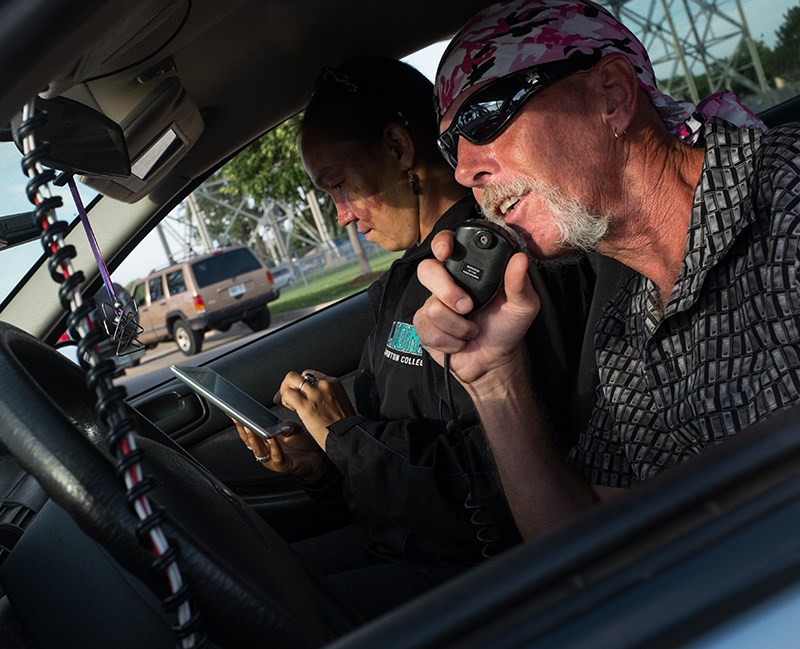Troy Shantz
Sarnia residents Ron Cross and Briana Reide aren’t the type to seek shelter when a storm approaches.
As volunteers with CANWARN, the Sarnia couple instead opts to spot and report what’s happening using their ham radio, providing useful details for Environment Canada weather reports.
“They look at their computers but they can’t see what’s going on out there,” Cross says. “They rely on us to give them the information. Eyes and ears up.”
The Canadian Weather Amateur Radio Network is an organization with volunteers across the country. A typical volunteer is a ham radio operator who does what’s called “ground-truthing, confirming on the ground what Environment Canada officials see on radar and satellite images.
But volunteers come from all walks of life and anyone interested in weather can participate.
Training sessions take place in municipalities across Ontario each year between April and June, said Geoff Coulson, an Environment Canada meteorologist and the main organizer behind the network. The training teaches prospective weather spotters what to look for and how to report it, he said.
“We’re basically providing a two-hour training course that teaches them a bit more about what to look for in the sky, the types of weather we like to get back into the weather centre, and we provide them a couple of ways to do that.” Coulson said.
In addition to amateur radio operators, weather spotters can now submit their observations through a toll-free phone line, email or by using a specific Twitter hashtag.
“The training is very much about spotting storms from a safe distance, from a safe location,” Coulson said.
It was network-trained OPP officers who provided crucial data when an F3-rated tornado devastated Goderich in 2011, killing one and injuring 37 others.
“As it was making landfall the reports of damage that they were giving us allowed us to extend that tornado warning further inland, knowing that this storm was producing violent and severe weather,” he said.
To get involved, visit the Environment and Climate Change Canada website at www.ec.gc.ca and type CANWARN in the search bar.
